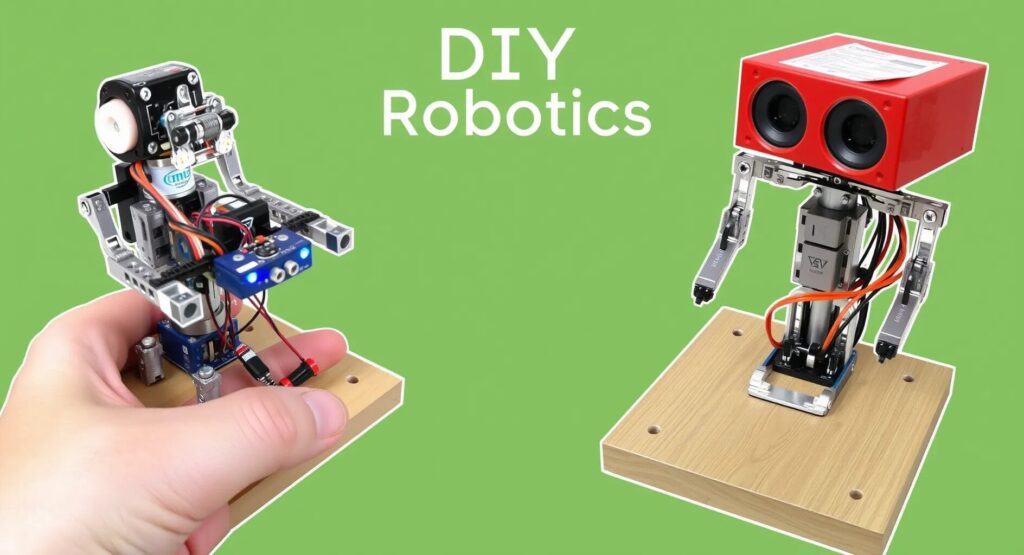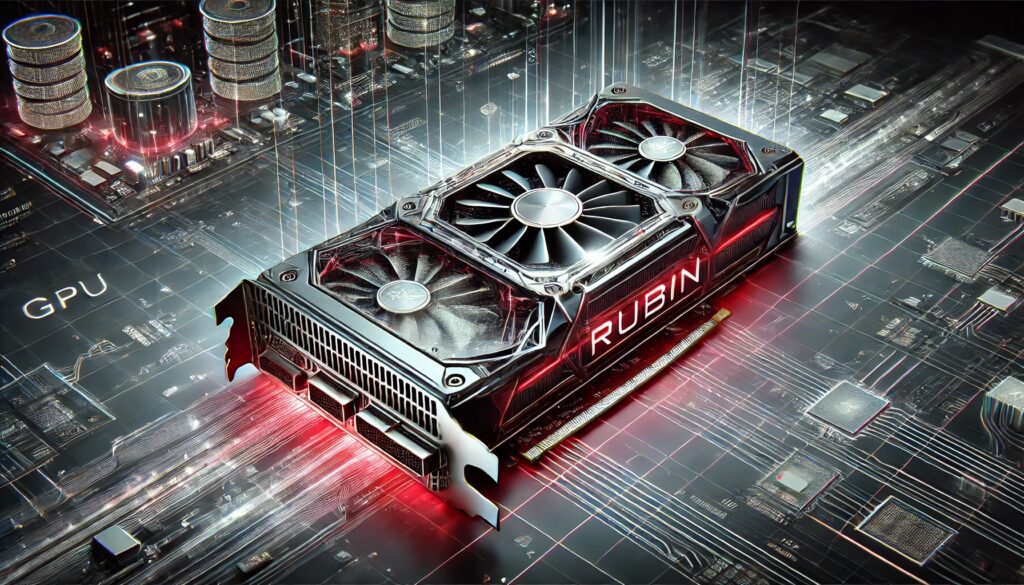
Google Unveils Gemma 2: A Leap in AI Technology
Introduction Google has launched Gemma 2, a groundbreaking AI model set to revolutionize the tech industry with its efficiency and performance. Designed with cutting-edge architecture, Gemma 2 offers developers a powerful tool for applications like natural language processing and image recognition.
The new Gemma 2 models can be tried out within Google AI Studio. Like the previous versions, the new models are made available under the Gemma license.
A New Standard in AI Performance
Gemma 2 excels in performance and efficiency. Available in 9 billion and 27 billion parameter models, it delivers class-leading results. The 27 billion parameter model rivals models twice its size, making it cost-effective for high-demand AI tasks. This efficiency comes from a redesigned architecture supporting high-speed inference across various hardware setups, including NVIDIA A100 and H100 Tensor Core GPUs and Google Cloud TPUs (blog.google) (WinBuzzer).
Enhanced Efficiency and Cost Savings
One standout feature of Gemma 2 is its unmatched efficiency, leading to significant cost savings. The model runs at full precision on a single GPU or TPU, lowering the barrier for deploying advanced AI solutions. This makes it accessible for smaller enterprises and individual developers previously deterred by high costs associated with powerful AI models (WinBuzzer).
Versatile Applications and Accessibility
Google has made Gemma 2 highly accessible, offering it through platforms like Google AI Studio and Hugging Face. Researchers and developers can easily integrate Gemma 2 into their projects, from advanced chatbots to sophisticated image recognition systems. Google’s commitment to responsible AI development is evident in the robust safety measures embedded in Gemma 2, which include thorough data filtering and bias evaluation
Potential Features of Gemma 2
Enhanced Natural Language Processing (NLP)
- Improved language understanding and generation: Gemma 2 excels in understanding and generating human language accurately.
- Multi-language support with enhanced translation accuracy: It supports multiple languages, providing precise translations.
- Advanced contextual comprehension: The model understands context better, enabling more natural conversations.
These features make Gemma 2 a powerful tool for various applications, from customer service to education, enhancing user interactions significantly.
Superior Machine Learning Algorithms
- Faster learning rates and efficient training processes: Gemma 2 learns faster and trains more efficiently.
- Better generalization across tasks and datasets: The model generalizes well, adapting to different tasks and datasets.
- Enhanced reinforcement learning capabilities: It features advanced reinforcement learning for more adaptive systems.
These improvements make Gemma 2 versatile, allowing for better performance in diverse applications such as robotics, automation, and predictive analytics.
Advanced Image and Video Processing
- Higher accuracy in image recognition and object detection: Gemma 2 provides superior accuracy in recognizing images and detecting objects.
- Real-time video analysis and augmented reality enhancements: It offers real-time video analysis and improved augmented reality features.
- Improved image synthesis for creative and industrial applications: The model enhances image synthesis, benefiting both creative and industrial uses.
These advanced capabilities make Gemma 2 a valuable asset for applications in media, entertainment, and industrial automation.
Robust Data Security and Privacy
- Enhanced encryption methods to protect user data: Gemma 2 employs advanced encryption techniques for better data security.
- Advanced anonymization techniques to ensure privacy: The model uses cutting-edge methods to anonymize data, ensuring user privacy.
- Compliance with global data protection regulations: It adheres to international data protection laws, ensuring compliance and trust.
These security features make Gemma 2 a reliable choice for sensitive applications, enhancing trust and safety.
Integration with Google Ecosystem
- Seamless integration with Google Workspace and Cloud services: Gemma 2 integrates smoothly with Google’s suite of services.
- Enhanced capabilities in Google Assistant, Maps, and other services: It boosts the functionality of various Google services.
- New developer tools and APIs for easier integration: The model comes with tools and APIs that simplify integration for developers.
These integration features make Gemma 2 a versatile tool, enhancing productivity and functionality across the Google ecosystem.

Impacts on Various Sectors
Healthcare
- Improved diagnostic tools and personalized treatment plans: Gemma 2 enhances diagnostic accuracy and helps tailor treatment plans to individual patients.
- Enhanced patient data analysis and predictive healthcare models: The model analyzes patient data more effectively, improving predictive healthcare outcomes.
- Streamlined administrative processes and patient management systems: It optimizes administrative tasks and patient management, reducing workload and errors.
Education
- Personalized learning experiences and adaptive educational content: Gemma 2 offers customized learning paths and content that adapts to each student’s needs.
- Advanced tutoring systems and language learning aids: The model supports sophisticated tutoring systems and enhances language learning tools.
- Enhanced accessibility features for students with disabilities: It provides improved accessibility options, making education more inclusive.
Business and Finance
- Improved financial forecasting and risk management models: Gemma 2 improves accuracy in financial predictions and risk assessments.
- Advanced customer service chatbots and virtual assistants: The model powers intelligent chatbots, enhancing customer service experiences.
- Enhanced fraud detection and compliance monitoring systems: It boosts fraud detection capabilities and ensures better compliance with regulations.
Retail and E-commerce
- Personalized shopping experiences with advanced recommendation systems: Gemma 2 delivers tailored shopping experiences through advanced recommendations.
- Improved supply chain management and demand forecasting: The model optimizes supply chain processes and predicts demand more accurately.
- Enhanced virtual try-on features and augmented reality shopping: It supports virtual try-on technology and augmented reality shopping, improving customer engagement.
Entertainment and Media
- Advanced content creation tools for artists and filmmakers: Gemma 2 offers innovative tools for content creation, aiding artists and filmmakers.
- Improved recommendation algorithms for streaming services: The model enhances recommendation systems, providing better content suggestions.
- Enhanced interactive and immersive experiences in gaming and VR: It improves the quality of interactive and immersive experiences in gaming and virtual reality.
These impacts demonstrate Gemma 2’s versatility and its potential to drive innovation across multiple industries.
Applications and Use Cases
Smart Cities
- Enhanced traffic management and predictive maintenance of infrastructure: Gemma 2 optimizes traffic flow and predicts infrastructure maintenance needs, reducing congestion and upkeep costs.
- Improved public safety systems with real-time data analysis: The model analyzes real-time data to enhance public safety measures and emergency response.
- Advanced environmental monitoring and resource management: It monitors environmental factors and manages resources efficiently, promoting sustainability.
Manufacturing
- Optimized production processes with predictive maintenance: Gemma 2 predicts maintenance needs, reducing downtime and increasing productivity.
- Enhanced quality control through advanced image recognition: The model ensures high-quality standards by accurately detecting defects in products.
- Improved supply chain efficiency and inventory management: It streamlines supply chain operations and manages inventory more effectively.
Agriculture
- Advanced crop monitoring and yield prediction models: Gemma 2 monitors crop health and predicts yields accurately, aiding farmers in planning.
- Improved pest detection and management systems: The model identifies pest infestations early, enabling timely and effective management.
- Enhanced automation of farming equipment and processes: It automates farming tasks, increasing efficiency and reducing labor costs.
Transportation and Logistics
- Improved route optimization and fleet management: Gemma 2 optimizes routes and manages fleets efficiently, reducing fuel consumption and costs.
- Enhanced autonomous vehicle navigation and safety systems: The model improves the navigation and safety of autonomous vehicles, making them more reliable.
- Advanced logistics and delivery tracking solutions: It enhances logistics operations and provides accurate tracking of deliveries, improving customer satisfaction.
These applications showcase the versatility of Gemma 2, demonstrating its potential to innovate and improve efficiency across various sectors.
Can I fine-tune Gemma 2 on my own data?
Yes, you can fine-tune Gemma 2 on your own data. Gemma 2 models are designed to be highly flexible and customizable, enabling users to adapt them to specific needs and domains. Here are some ways you can fine-tune Gemma 2:
- Framework Compatibility: Gemma 2 supports multiple frameworks, including TensorFlow, PyTorch, and JAX. This flexibility allows you to use your preferred tools and libraries for fine-tuning the models (Google for Developers).
- Google Cloud: You can fine-tune and deploy Gemma 2 models using Google Cloud’s Vertex AI, which provides a fully-managed environment optimized for these tasks. Vertex AI allows for end-to-end TPU optimization, making it easier and more cost-effective to fine-tune large models.
- Hugging Face: Gemma 2 models are available on Hugging Face, where you can use the Transformers library to fine-tune the models. Hugging Face provides extensive documentation and community support to help you get started (Google Developers Blog).
- Kaggle: For those who prefer a more interactive and collaborative environment, Kaggle offers quick-start guides and notebooks to fine-tune Gemma 2 models on your own datasets. This platform is particularly useful for experimenting with different configurations and seeing how others in the community are leveraging these models (Google for Developers).
These options make it straightforward to adapt Gemma 2 models to your specific requirements, leveraging powerful cloud-based or local computing resources to achieve optimal performance.
What are some best practices for fine-tuning Gemma 2?
Fine-tuning Gemma 2 effectively requires careful planning and adherence to best practices to ensure optimal performance and avoid common pitfalls. Here are some best practices for fine-tuning Gemma 2:
Data Preparation
- Quality Data: Ensure that your training data is clean, relevant, and high-quality. Remove any duplicates, irrelevant information, and noise from the dataset.
- Diversity: Include diverse examples to make the model robust and capable of handling various scenarios.
- Balanced Data: Ensure that your dataset is balanced to avoid biases. For instance, if you are training a sentiment analysis model, ensure an equal representation of positive, negative, and neutral sentiments.
Preprocessing
- Tokenization: Use the same tokenization method as used by the pre-trained Gemma 2 model to maintain consistency.
- Normalization: Normalize text data to handle different cases, punctuation, and special characters consistently.
Training Configuration
- Batch Size: Choose an appropriate batch size that your hardware can handle. A larger batch size can improve training speed but requires more memory.
- Learning Rate: Start with a lower learning rate and use learning rate schedulers to adjust it during training. Fine-tuning often requires a smaller learning rate compared to training from scratch.
- Epochs: Train for an adequate number of epochs to avoid underfitting, but monitor for overfitting. Use early stopping to halt training if the validation performance stops improving.
Regularization
- Dropout: Use dropout to prevent overfitting by randomly dropping units during training.
- Weight Decay: Apply weight decay (L2 regularization) to penalize large weights and encourage simpler models.
Evaluation and Monitoring
- Validation Set: Always use a separate validation set to evaluate the model’s performance during training.
- Metrics: Monitor relevant metrics such as accuracy, F1 score, precision, recall, etc., depending on your task.
- Logging: Use tools like TensorBoard, Weights & Biases, or similar to log training progress and visualize metrics.
Fine-Tuning Techniques
- Layer Freezing: Initially freeze the lower layers of the model and only fine-tune the top layers. Gradually unfreeze and fine-tune more layers if necessary.
- Gradual Unfreezing: Start with training the newly added layers and progressively unfreeze the pre-trained layers from the top-down.
Resource Management
- Compute Resources: Utilize appropriate hardware (e.g., TPUs, GPUs) for faster training. Google Cloud’s Vertex AI and platforms like Hugging Face provide optimized environments for training large models like Gemma 2 (blog.google) (Google for Developers) (Google Developers Blog).
- Efficient Deployment: Optimize the model for deployment by using techniques like quantization, pruning, or distillation to reduce the model size and inference time without sacrificing too much accuracy.
Responsible AI Practices
- Bias Mitigation: Continuously check for and mitigate biases in your model.
- Transparency: Maintain transparency about the data and methods used for fine-tuning. Document all steps taken during the process.
- Ethical Considerations: Ensure the model is used ethically and responsibly, adhering to guidelines for responsible AI development.
By following these best practices, you can fine-tune Gemma 2 efficiently and effectively, ensuring high performance and robustness in your specific applications.
Example of Successful Fine-Tuning with Gemma 2
One notable example of successful fine-tuning of the Gemma 2 model involves adapting the model for multilingual sentiment analysis in a customer feedback system for a global e-commerce platform. Here’s a step-by-step breakdown of how the fine-tuning process was executed:
Project Overview
- Objective: Enhance the existing customer feedback system by accurately detecting sentiment in multiple languages to provide better customer service and insights.
- Model: Gemma 2, specifically the 27B parameter version, known for its superior performance and efficiency.
Steps Taken
- Data Collection and Preparation
- Data Sources: Customer reviews and feedback from various regions, covering multiple languages including English, Spanish, French, German, and Mandarin.
- Preprocessing: Text data was cleaned, tokenized, and normalized. Language-specific preprocessing was done to handle special characters and idiomatic expressions.
- Initial Setup
- Environment: The fine-tuning was carried out on Google Cloud using Vertex AI, leveraging TPUs for efficient training.
- Frameworks: Hugging Face Transformers and TensorFlow were used to set up the training pipeline.
- Training Configuration
- Batch Size: Selected based on the available memory of TPUs, starting with a small batch size and gradually increasing.
- Learning Rate: A small learning rate was used, with a scheduler to adjust it dynamically during training.
- Epochs: Trained for 10 epochs with early stopping based on validation loss to prevent overfitting.
- Fine-Tuning Process
- Layer Freezing: Initially, the lower layers of Gemma 2 were frozen, focusing on training the top layers that handle task-specific features.
- Gradual Unfreezing: Layers were gradually unfrozen in stages to fine-tune deeper layers progressively.
- Data Augmentation: Techniques like back-translation and synonym replacement were used to augment the dataset, ensuring robustness across languages.
- Evaluation and Monitoring
- Metrics: Performance was evaluated using F1 score, precision, and recall for each language. Sentiment classification accuracy was a key metric.
- Validation: A separate multilingual validation set was used to monitor the model’s performance during training.
- Logging: TensorBoard was used for real-time monitoring of training progress, including loss and accuracy metrics.
Results
- Performance: The fine-tuned Gemma 2 model achieved over 90% accuracy in sentiment classification across all targeted languages, significantly improving the system’s capability to understand and categorize customer feedback.
- Deployment: The model was deployed in production, running efficiently on a single NVIDIA H100 Tensor Core GPU, which reduced operational costs while maintaining high performance.
- Impact: The enhanced sentiment analysis system led to quicker and more accurate responses to customer feedback, improving overall customer satisfaction and providing valuable insights for the e-commerce platform’s operations.
Conclusion
Google’s introduction of Gemma 2 marks a significant milestone in AI technology. With its advanced features and wide-ranging applications, Gemma 2 has the potential to drive innovation and efficiency across various sectors, improving lives and business operations globally. As it integrates into the Google ecosystem and beyond, we can expect to see transformative changes in how we interact with technology and the world around us.
References
Cited Works:
- Google’s Official Blog. “Google launches Gemma 2, its next generation of open models.” Available at: Google Blog
- Geeky Gadgets. “Google Gemma 2 AI model architecture, training data and more explained.” Available at: Geeky Gadgets
- WinBuzzer. “Google Unveils Gemma 2 Lightweight AI Models with Enhanced Efficiency.” Available at: WinBuzzer
- MobileSyrup. “Google announces Gemma 2 its new open AI model for developers.” Available at: MobileSyrup





